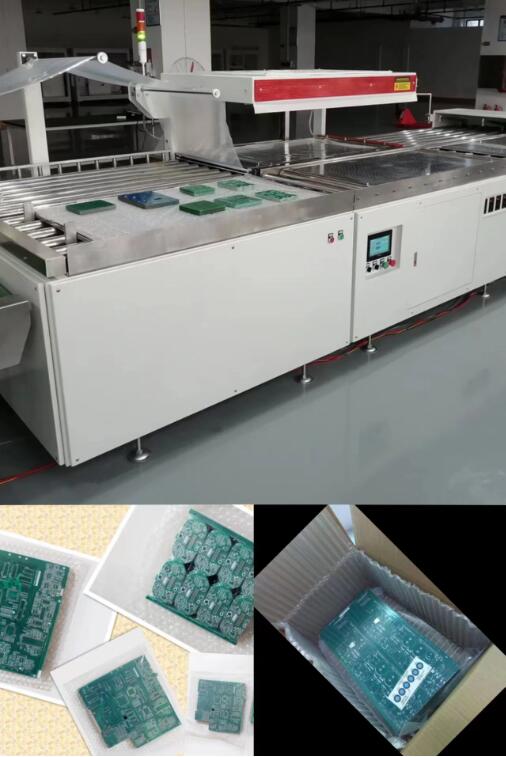| Sign In | Join Free | My xxjcy.com |
|
- Home
- Products
- About Us
- Quality Control
- Contact Us
- Get Quotations
| Sign In | Join Free | My xxjcy.com |
|
Place of Origin : Shenzhen,China
Brand Name : ONESEINE
Certification : ISO9001,ISO14001
Model Number : ONE-102
MOQ : 1pcs
Price : USD0.1-1000
Packaging Details : Vacuun bag
Delivery Time : 5-8 working days
Payment Terms : T/T, Western Union
Supply Ability : 1000000000pcs/mon
Product description : 4Layer Fr4 tg130 PCB Circuit Board
Number of layers : 4
Material : Fr4
TG value : 130
Surface finish : Immersion gold
Impedance Control : 100ohm +/-10%
Copper Weight : 0.5--6oz
Produc Name : FR4 tablet pcb board
4Layer Fr4 1.6mm Thickness Epoxy Material Tg150 PCB Circuit Board
PCB parameter:
Number of layers: 4 layers
Material: FR-4
Finished product thickness: 1.55mm
Finished copper foil thickness: 35UM
Surface treatment: Immersion gold
Minimum aperture: 0.2MM
Minimum line width and distance: 0.144MM/0.082MM
FR4 PCB Applications:
FR-4 is a common material for printed circuit boards (PCBs). A thin layer of copper foil is typically laminated to one or both sides of an FR-4 glass epoxy panel. These are commonly referred to as copper clad laminates. The copper thickness or copper weight can vary and so is specified separately.
FR-4 is also used in the construction of relays, switches, standoffs, busbars, washers, arc shields, transformers and screw terminal strips.
Here are some key aspects related to the thermal stability of FR4 PCBs:
The thermal stability of FR4 PCBs refers to their ability to withstand and operate under different temperature conditions without experiencing significant degradation or performance issues.
FR4 PCBs are designed to have good thermal stability, meaning they can handle a wide temperature range without warping, delaminating, or suffering from electrical or mechanical failures.
Glass Transition Temperature (Tg): Tg is an important parameter that characterizes the thermal stability of FR4. It represents the temperature at which the epoxy resin in the FR4 substrate undergoes a transition from a rigid state to a more flexible or rubbery state. FR4 PCBs typically have a Tg value around 130-180°C, which means they can withstand elevated temperatures without significant changes in their mechanical properties.
Coefficient of Thermal Expansion (CTE): CTE is a measure of how much a material expands or contracts with changes in temperature. FR4 PCBs have a relatively low CTE, which ensures that they can withstand thermal cycling without excessive stress or strain on the components and solder joints. The typical CTE range for FR4 is around 12-18 ppm/°C.
Thermal Conductivity: FR4 itself is not highly thermally conductive, which means it is not an excellent heat conductor. However, it still provides adequate heat dissipation for most electronic applications. To enhance the thermal performance of FR4 PCBs, additional measures can be taken, such as incorporating thermal vias or using additional heat sinks or thermal pads in critical areas to improve heat transfer.
Soldering and Reflow Processes: FR4 PCBs are compatible with standard soldering and reflow processes commonly used in electronic assembly. They can withstand the elevated temperatures involved in soldering without significant damage or dimensional changes.
It's important to note that while FR4 PCBs have good thermal stability, they still have limits. Extreme temperature conditions, such as very high temperatures or rapid temperature changes, can potentially cause stress, delamination, or other issues. Therefore, it's important to consider the specific operating environment and choose appropriate materials and design considerations accordingly.
FR4 PCBs are known for their excellent thermal stability, high mechanical strength, and resistance to moisture and chemicals. These properties make them suitable for a wide range of applications, including consumer electronics, telecommunications, automotive, industrial equipment, and more.
The FR4 material consists of a thin layer of copper foil laminated onto a substrate made of woven fiberglass cloth impregnated with epoxy resin. The copper layer is etched to create the desired circuit pattern, and the remaining copper traces provide the electrical connections between components.
The FR4 substrate offers good dimensional stability, which is important for maintaining the integrity of the circuitry over a wide range of temperatures. It also has low electrical conductivity, which helps prevent short circuits between adjacent traces.
In addition to its electrical properties, FR4 has good flame retardant properties due to the presence of halogenated compounds in the epoxy resin. This makes FR4 PCBs suitable for applications where fire safety is a concern.
Overall, FR4 PCBs are widely used in the electronics industry due to their excellent combination of electrical performance, mechanical strength, thermal stability, and flame retardancy.

|
|
4Layer Fr4 1.6mm thickness Epoxy Material Tg150 PCB Circuit Board Images |